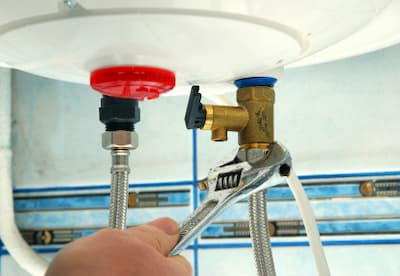How to Keep Your Home's Hot Water System in Good ConditionKey Guidance on Caring for Your Home's Hot Water System
How to Keep Your Home's Hot Water System in Good ConditionKey Guidance on Caring for Your Home's Hot Water System
Blog Article
This post on the next paragraphs about How to Maintain a Hot Water Heater in a Few Simple Steps is totally captivating. Try it and make your own personal ideas.

Hot water is vital for everyday convenience, whether it's for a rejuvenating shower or cleaning meals. To guarantee your warm water system runs effectively and lasts much longer, routine maintenance is key. This write-up supplies functional suggestions and insights on how to preserve your home's hot water system to stay clear of disturbances and expensive repair work.
Introduction
Maintaining your home's hot water system could appear overwhelming, yet with a couple of basic steps, you can ensure it operates efficiently for several years to find. This guide covers whatever from recognizing your hot water system to DIY upkeep ideas and understanding when to call in specialist aid.
Value of Maintaining Your Warm Water System
Normal maintenance not only expands the life-span of your warm water system but also guarantees it runs efficiently. Disregarding maintenance can result in lowered performance, higher energy expenses, and even early failure of the system.
Indications Your Hot Water System Needs Upkeep
Recognizing when your warm water system requires interest can avoid significant concerns. Watch out for signs such as irregular water temperature level, odd noises from the heater, or rusty water.
Recognizing Your Warm Water System
Before diving into maintenance jobs, it's practical to understand the standard parts of your hot water system. Typically, this consists of the hot water heater itself, pipes, anode rods, and temperature level controls.
Regular Monthly Maintenance Tasks
Normal month-to-month checks can assist catch small problems before they rise.
Purging the Water Heater
Purging your hot water heater eliminates sediment build-up, enhancing efficiency and lengthening its life.
Checking and Replacing Anode Rods
Anode poles avoid corrosion inside the container. Examining and changing them when worn is essential.
Evaluating and Changing Temperature Setups
Changing the temperature level setups ensures optimum performance and safety and security.
DIY Tips for Upkeep
You can do a number of maintenance jobs yourself to maintain your hot water system in leading condition.
Looking for Leaks
Regularly check pipes and links for leaks, as these can cause water damage and higher costs.
Evaluating Stress Relief Valves
Checking the stress relief valve ensures it works appropriately and prevents extreme stress build-up.
Protecting Pipes
Protecting warm water pipes minimizes heat loss and can conserve power.
When to Call a Professional
While do it yourself upkeep is beneficial, some problems call for professional competence.
Facility Issues Needing Specialist Help
Examples consist of significant leaks, electrical issues, or if your hot water heater is consistently underperforming.
Routine Expert Upkeep Conveniences
Professional maintenance can consist of detailed evaluations, tune-ups, and making sure conformity with safety requirements.
Verdict
Normal maintenance of your home's hot water system is necessary for performance, longevity, and expense financial savings. By adhering to these tips and recognizing when to look for professional help, you can guarantee a reputable supply of warm water without unanticipated disturbances.
How to Maintain an Instant Hot Water Heater
Before tinkering with your hot water heater, make sure that it’s not powered on. You also have to turn off the main circuit breaker and shut off the main gas line to prevent accidents. Also turn off the water valves connected to your unit to prevent water from flowing into and out of the appliance. 2. When you’re done, you have to detach the purge valves’ caps. These look like the letter “T” and are situated on either side of the water valves. Doing so will release any pressure that has accumulated inside the valves while at the same time avoid hot water from shooting out and burning your skin. 3. When the purge valves’ caps are removed, you have to connect your hosing lines to the valves. Your unit should have come with three hoses but if it didn’t, you can purchase these things from any hardware or home repair shops. You can also get them from retail stores that sell water heating systems. Read the user’s manual and follow it to complete this task properly. When the hosing lines are connected, open the purge port’s valves. 4. You should never use harsh chemical cleaners or solutions when cleaning your unit. Make use of white vinegar instead. It should be undiluted and you’ll probably use about 2 gallons. 5. Now flush your water heater. This task should probably take about 40 minutes. We can’t give you specific directions for this because the procedure is carried out depending on the type, model and brand of your heater. With that being said, refer to the user’s manual. 6. When you’re done draining the unit, you have to turn off the purge port valves again. Remove the hosing lines that you earlier installed on each of the water valves. Put the valve caps (purge port) back in their respective places and be very careful so as not to damage the rubber discs that are found inside these caps. 7. Now that everything’s back in place, check your user’s manual again to find out how to reactivate your water heating system. 8. Once it is working, turn one of your hot water faucets on just to let air pass through the heater’s water supply pipes. Leave the tap on until water flows smoothly out of it. https://www.orrplumbing.com/blog/2014/september/how-to-maintain-an-instant-hot-water-heater/

I am just very excited about Water Heater Maintenance Tips You Can't Afford to Forget and I'm hoping you appreciated our blog posting. Sharing is good. Who knows, you may be helping someone out. We truly appreciate your readership.
This Website Report this page